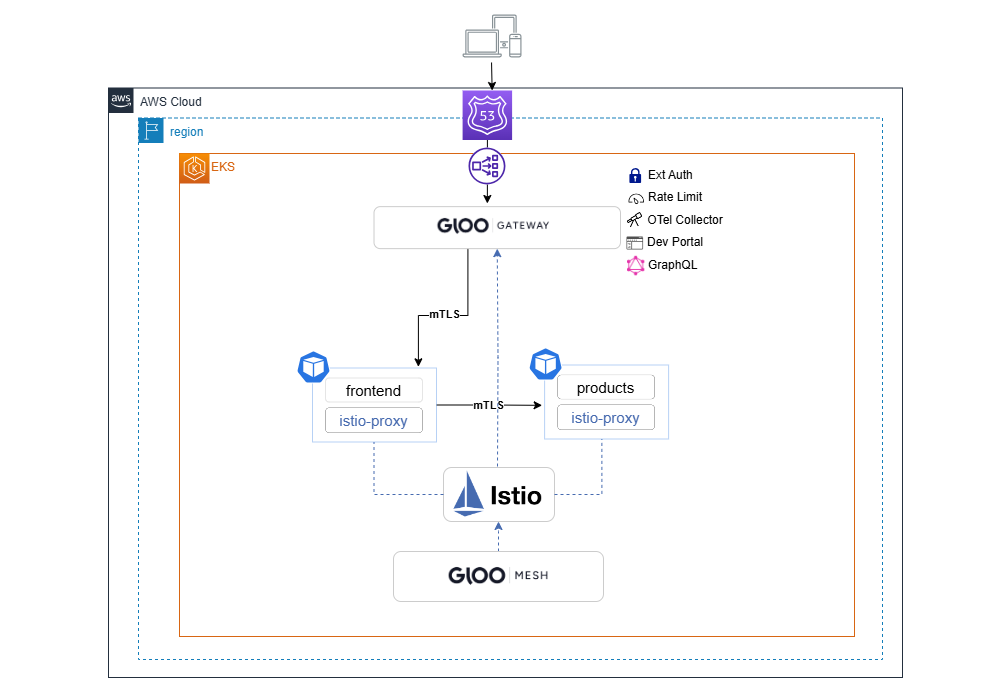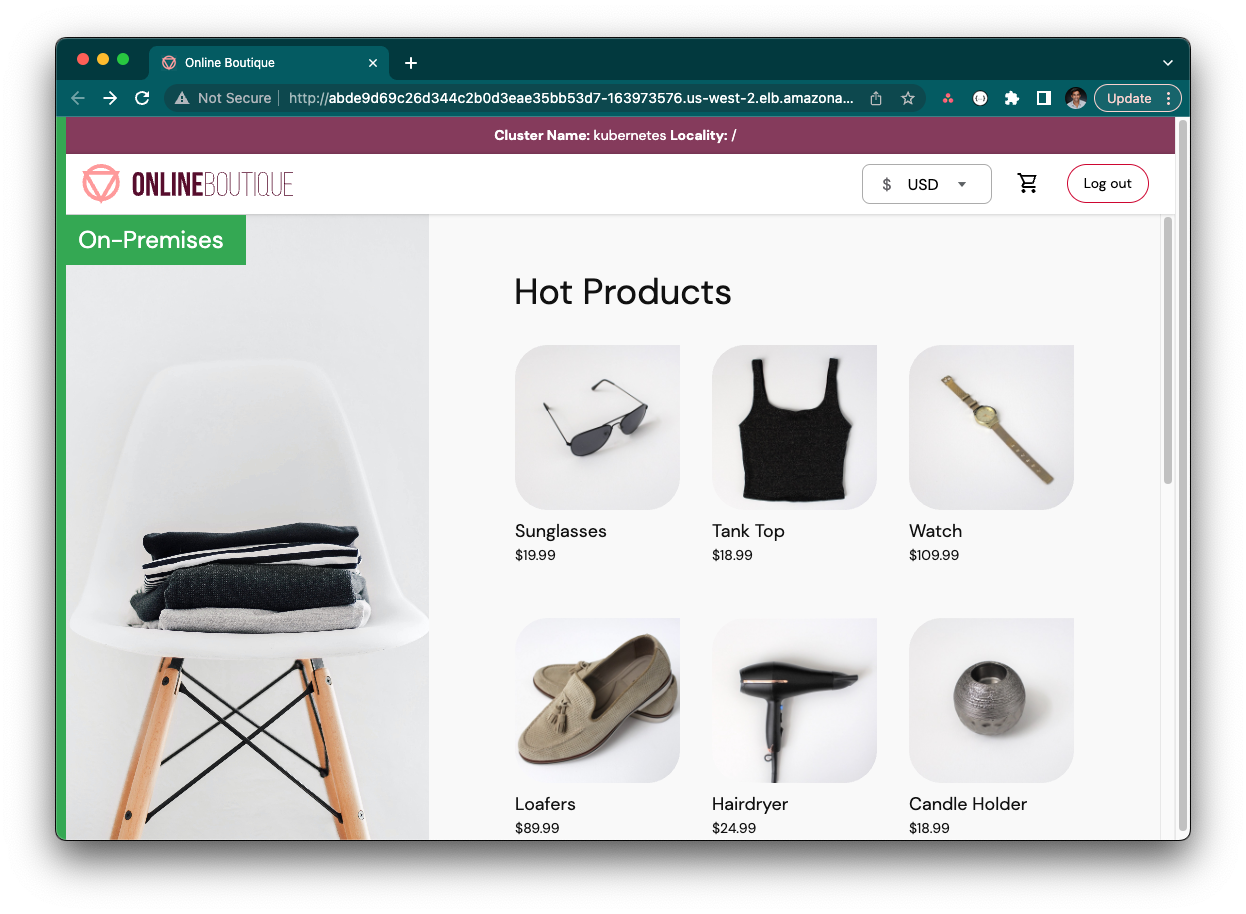Lab 2 - Deploy & Expose Online Boutique Sample Application

Deploy the Online Boutique microservices to the online-boutique namespace.
kubectl create namespace online-boutique
kubectl label ns online-boutique istio-injection=enabled
helm upgrade --install online-boutique \
oci://us-central1-docker.pkg.dev/solo-test-236622/solo-demos/onlineboutique \
--create-namespace \
--namespace online-boutique
To capture the traffic coming to the Gateway and route them to your applications, you need to use the VirtualGateway and RouteTable resources.
VirtualGateway represents a logical gateway configuration served by Gateway workloads. It describes a set of ports that the virtual gateway listens to for incoming or outgoing HTTP/TCP connections, the type of protocol to use, SNI configuration, etc.
RouteTable defines one or more hosts and a set of traffic route rules to handle traffic for these hosts. The traffic route rules can be delegated to other RouteTables based on one or more given hosts or specific paths. This allows you to create a hierarchy of routing configuration and dynamically attach policies at various levels.
-
Let’s start by assuming the role of an Ops team. Configure the Gateway to listen on port 80 and create a generic RouteTable that further delegates the traffic routing to RouteTables in other namespaces.
kubectl apply -f - <<EOF apiVersion: networking.gloo.solo.io/v2 kind: VirtualGateway metadata: name: ingress namespace: gloo-mesh-gateways spec: workloads: - selector: labels: app: istio-ingressgateway namespace: gloo-mesh-gateways listeners: - http: {} port: number: 80 allowedRouteTables: - host: '*' selector: namespace: gloo-mesh-gateways --- apiVersion: networking.gloo.solo.io/v2 kind: RouteTable metadata: name: ingress namespace: gloo-mesh-gateways spec: hosts: - '*' virtualGateways: - name: ingress namespace: gloo-mesh-gateways workloadSelectors: [] http: - name: application-ingress labels: ingress: all delegate: routeTables: - namespace: online-boutique EOF -
The Dev team can now write their own RouteTables in their own namespace. Create a RouteTable to send traffic that matches URI prefix: / to the frontend application.
kubectl apply -f - <<EOF apiVersion: networking.gloo.solo.io/v2 kind: RouteTable metadata: name: frontend namespace: online-boutique spec: workloadSelectors: [] http: - matchers: - uri: prefix: / name: frontend labels: route: frontend forwardTo: destinations: - ref: name: frontend namespace: online-boutique port: number: 80 EOF -
Visit the online boutique application in your browser.
export GLOO_GATEWAY=$(kubectl -n gloo-mesh-gateways get svc istio-ingressgateway -o jsonpath='{.status.loadBalancer.ingress[0].*}') printf "\n\nGloo Gateway available at http://$GLOO_GATEWAY\n"

In this lab, we successfully deployed and exposed the Online Boutique Sample Application. By utilizing the VirtualGateway and RouteTable resources, we have established a foundational understanding of how to manage traffic in a microservices architecture. This knowledge is crucial for effectively routing workloads, which is the focus of our next lab.